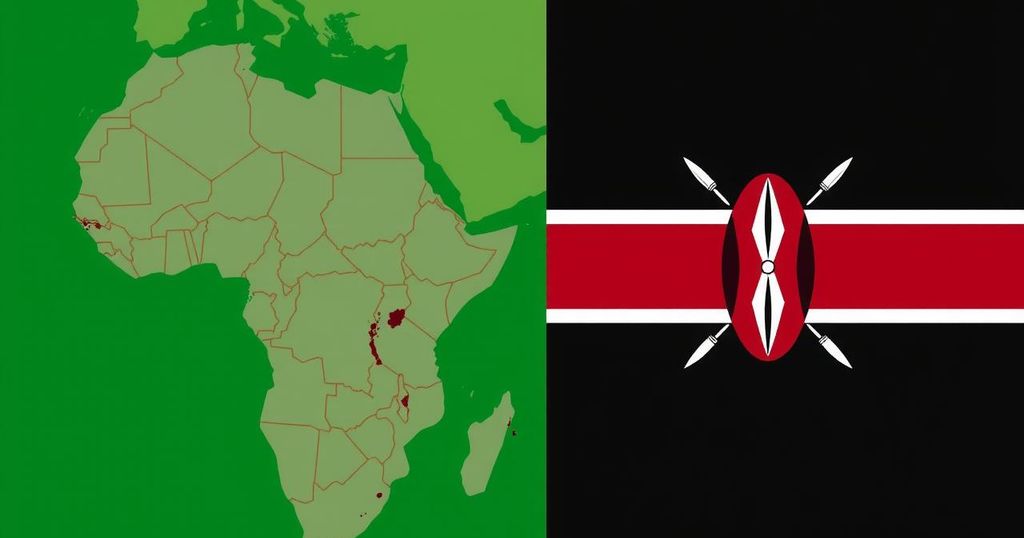Kenya and DRC Benefit from IMF Reform Initiatives

The IMF has enacted vital reforms that benefit Kenya and the Democratic Republic of Congo by providing increased access to concessional funding and reducing debt servicing costs. These changes include an elevated borrowing limit to ease surcharges and an expansion of funds available through the Poverty Reduction and Growth Trust. The reforms aim to support low-income nations recovering from economic shocks, with a stronger focus on sustainable development outcomes.
The International Monetary Fund (IMF) has recently implemented significant reforms that have positioned Kenya and the Democratic Republic of Congo (DRC) as key beneficiaries, particularly in accessing concessional funding and mitigating debt servicing costs. In alignment with World Bank President Ajay Banga’s commitments made during the annual meetings in Marrakesh, Morocco, these reforms predominantly target low-income and heavily indebted nations in Africa. A notable modification made by the IMF involved the easing of surcharges that typically apply to nations exceeding their borrowing limits from the Fund. Previously, countries borrowing above 187.5 percent of their quota faced surcharges of at least two percent on excess amounts. However, the threshold has now been elevated to 300 percent, significantly reducing additional financial burdens on six African nations, including Kenya, which had incurred approximately $4.6 million in surcharges this year alone. IMF Managing Director Kristalina Georgieva highlighted that these reforms could decrease borrowing costs for member countries by approximately 36 percent, translating to an annual savings of about $1.2 billion. This relief is particularly critical for countries like Kenya, which is grappling with high debt distress risks amid escalating interest rates. Furthermore, the IMF’s board has approved a reform expected to enhance the available funds for its Poverty Reduction and Growth Trust (PRGT), providing $3.8 billion annually to bolster lending for impoverished countries recovering from economic shocks exacerbated by the Covid-19 pandemic. Kenya and DRC are among the top three borrowers from this facility, with the DRC owing $2.1 billion and Kenya $1.6 billion as of September 2023. The demand for concessional funds has sharply increased in the aftermath of the pandemic, prompting the IMF to consider mobilizing additional resources from its accounts and donors to ensure that impoverished nations receive the necessary support. While these reforms have been received positively, experts emphasize the importance of ensuring that the funds are effectively utilized for sustainable development. Development economist Fadhel Kaboub articulated this sentiment, stating that while the reforms are commendable, the focus must be on how these funds are appropriated to break the cycle of structural financial challenges that have historically plagued the African continent.
The International Monetary Fund (IMF) and the World Bank, collectively known as the Bretton Woods institutions, play a critical role in providing financial support to countries in need, particularly during economic crises. The reforms introduced by the IMF aim to address the unique challenges faced by low-income and heavily indebted nations, particularly in Africa. With recent global economic disruptions resulting from the Covid-19 pandemic, access to concessional financing has become increasingly vital for these nations. The PRGT serves as a lifeline for countries struggling to recover from economic shocks, enabling them to invest in essential development initiatives without the burden of high-interest rates. The recent changes and increases in borrowing thresholds represent a pivotal shift in the IMF’s approach to debt relief and concessional financing, underscoring the institution’s commitment to supporting vulnerable economies.
In summary, the IMF’s recent reforms are a significant step towards alleviating the financial strain on Kenya and the Democratic Republic of Congo, enabling them to access crucial funds while reducing debt servicing costs. The increases in borrowing thresholds and the enhancements to the PRGT exemplify a responsive approach to the pressing needs of low-income countries. Nonetheless, it is critical that these funds are directed toward meaningful development projects that address long-standing structural economic issues. As the reforms unfold, stakeholders must ensure that these initiatives lead to tangible, sustainable improvements in the economic resilience of the affected nations.
Original Source: www.theeastafrican.co.ke








